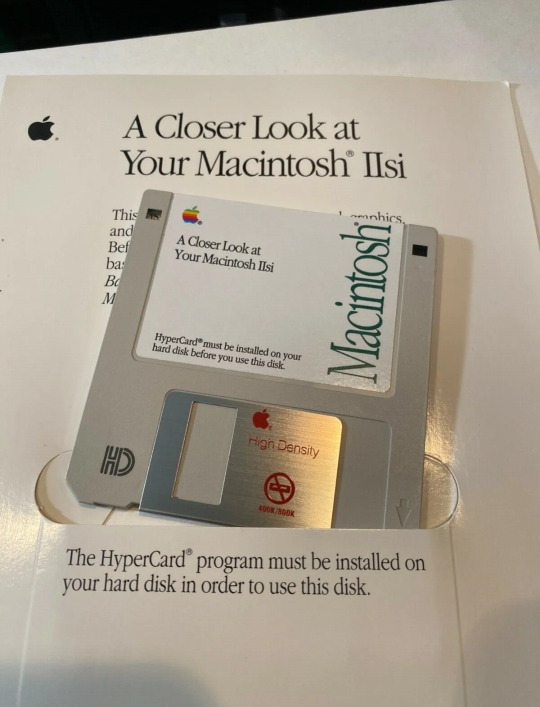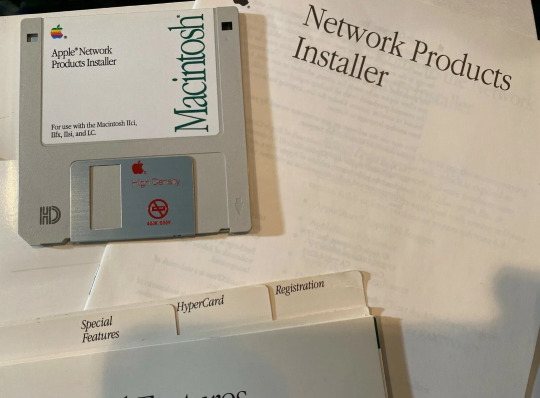#Internetconnectivity
Text

Customizable Network Wiring Solutions for Commercial Spaces by Low Voltage Houston in Houston, Texas
Low Voltage Houston stands as a leading provider of network wiring and cabling solutions in Houston, TX, offering dedicated and industry-standard services tailored for commercial spaces.
Our Services
Commercial Network Wiring: We offer scalable solutions for businesses of all sizes, ensuring robust network infrastructure.
Customized Network Cabling: Tailored cabling designs based on your business layout and future expansion plans.
Structured Wiring & Cable Systems: Organized and efficient cabling structures for optimal performance and growth.
Voice and Data Cabling: Installation of low-voltage cabling for seamless telecommunication and data transfer.
Security System Cabling: High-quality cabling solutions for surveillance and security systems.
WiFi & Internet Systems: Reliable cabling for uninterrupted internet and network connectivity.
#NetworkWiring#CommercialNetworking#LowVoltageSolutions#HoustonBusinessTech#NetworkInfrastructure#TechSolutions#BusinessConnectivity#ProfessionalCabling#HoustonTech#SmartWiring#LowVoltageHouston#CommercialSpaces#CustomizedSolutions#StructuredWiring#CablingSolutions#VoiceAndData#SecuritySystems#WiFiInternet#HoustonTX#BusinessNetworking#LowVoltageCabling#ScalableSolutions#RobustInfrastructure#FutureExpansion#OptimalPerformance#SurveillanceSystems#InternetConnectivity#CommercialServices#IndustryStandard#networkwiringsolutions
3 notes
·
View notes
Text
Advancements in Home Internet Connections in Australia

Australia has entered a revolutionary era of connectivity with significant advances in household internet connections in recent years. These developments have completely changed how Australians live, work, and interact in addition to improving internet speed and dependability.
Dial-up connections, which were characterized by sluggish speeds and frequent disconnections, marked the beginning of residential internet connections in Australia in the late 1990s. With the introduction of broadband in the early 2000s, speeds and dependability were greatly increased. This was made possible by innovations like cable internet and Digital Subscriber Line (DSL). Still, a major step forward was brought about by the development of fiber-optic networks and wireless technology.
The National Broadband Network (NBN), a government-led project aiming at giving all Australians access to high-speed internet, has been one of the most noteworthy developments. To improve Australia's telecommunications network, a significant infrastructure investment known as the NBN project was started in 2009.
Regarding household internet connections, fiber-optic technology has revolutionized the industry. Fiber-optic cables employ light instead of conventional copper wires to transport data, enabling much faster speeds and more bandwidth. Fiber-optic network deployment in Australia has made gigabit-speed internet possible, revolutionizing the way Australians use the internet for a variety of purposes, including gaming, streaming, and remote work.
Cities have seen a notable improvement in internet performance after the adoption of fiber-to-the-premises (FTTP) technology. FTTP connections, as opposed to other technologies, offer a direct fiber link to households, guaranteeing better speeds and more dependable access. The increasing demand for online gaming, high-definition streaming services, and other data-intensive applications has been made possible by this breakthrough.
Improvements in home internet connections have been largely attributed to wireless technology as well as fiber-optic breakthroughs. Increased mobile internet speeds have been made possible with the introduction of 4G LTE networks, which have been especially helpful for users in places with poor fixed-line infrastructure.
In the future, the rollout of 5G technology is expected to further transform residential internet connections. 5G has the potential to improve home broadband services as well as mobile internet experiences thanks to its incredibly fast speeds, low latency, and ability to connect multiple devices at once. Particularly in areas where fiber development is difficult, 5G is anticipated to supplement current fiber networks in Australia by offering more adaptable and scalable internet options.
Despite significant progress, there are still issues that need to be resolved concerning residential internet connections, especially when it comes to closing the digital gap that exists between urban and rural communities. Even with great advancements, internet speed, and connectivity issues persist in certain isolated and rural Australian towns.
By using satellite and fixed-wireless technologies to reach more remote locations, the NBN has made significant progress in resolving these inequities. But continued innovation and investment are required to guarantee that every Australian, wherever they may be, can take advantage of reliable internet access.
Given the steady progress in both technology and infrastructure, residential internet connections in Australia appear to have a bright future. The next-generation connection will be heavily influenced by improvements in satellite internet, 5G, and gigabit-speed fiber networks, among other innovations, as demand for faster and more dependable internet develops.
The demand for reliable and fast internet connections will also be increased by developments in smart home technology and the Internet of Things (IoT). The integration of these technologies, which range from home automation systems to smart appliances, will depend on dependable and easy connectivity to the Internet.
From the early days of dial-up to the present era of fiber-optic and wireless technology, home internet connections in Australia have undergone major developments. With improved speed, dependability, and general connectedness, the NBN rollout and the arrival of fiber-optic and 5G technologies have completely changed how Australians view and use the internet.
Future investments in innovation and infrastructure promise even faster and more dependable internet, even while there are still obstacles to overcome, especially in addressing regional inequities. Improvements in household internet connections will be crucial in reshaping Australia's digital landscape, spurring economic expansion, and raising living standards for all citizens.
Visit our website https://nextelle.com.au/.
0 notes
Text
#BGP#BorderGatewayProtocol#NetworkRouting#InternetRouting#BGPProtocol#NetworkInfrastructure#RoutingTechnology#InternetConnectivity#NetworkSecurity#BGPOptimization#IPRouting
0 notes
Text
0 notes
Text
#BestInternet#Serviceprovider#broadband#internet service#bestinternetserviceinindia#highfrequency#bestservice#wireless#internetconnectivity#highspeedinternet
1 note
·
View note
Text
Awning Fabrics Market Valuation Outlook See Stable Growth Ahead | GQ Research

The Awning Fabrics market is set to witness remarkable growth, as indicated by recent market analysis conducted by GQ Research. In 2023, the global Awning Fabrics market showcased a significant presence, boasting a valuation of US$ 3.11 Billion. This underscores the substantial demand for Awning Fabrics technology and its widespread adoption across various industries.
Get Sample of this Report at: https://gqresearch.com/request-sample/global-and-regional-awning-fabrics-industry-status-and-prospects-professional-market/
Projected Growth: Projections suggest that the Awning Fabrics market will continue its upward trajectory, with a projected value of US$ 372 Billion by 2030. This growth is expected to be driven by technological advancements, increasing consumer demand, and expanding application areas.
Compound Annual Growth Rate (CAGR): The forecast period anticipates a Compound Annual Growth Rate (CAGR) of 3.16 %, reflecting a steady and robust growth rate for the Awning Fabrics market over the coming years.
Technology Adoption: In the Awning Fabrics market, technology adoption is driving significant improvements in fabric durability, weather resistance, and UV protection. Advanced weaving techniques, coatings, and fabric treatments enhance the performance and longevity of awning fabrics, making them more resilient to environmental factors and prolonging their lifespan.
Application Diversity: The Awning Fabrics market offers a diverse range of applications across residential, commercial, and industrial sectors. From retractable patio awnings to shade structures for outdoor events and commercial buildings, awning fabrics serve various purposes, providing shade, protection from the elements, and aesthetic enhancements to outdoor spaces.
Consumer Preferences: Consumer preferences in the Awning Fabrics market are influenced by factors such as fabric quality, color, design, and durability. End-users prioritize awning fabrics that offer superior UV protection, fade resistance, and easy maintenance. Additionally, there is a growing demand for eco-friendly fabrics made from sustainable materials and processes, reflecting a shift towards environmentally conscious consumer choices.
Technological Advancements: Continuous technological advancements drive innovation in the Awning Fabrics market. From the development of high-performance synthetic fibers to innovative fabric coatings and treatments, technological advancements enhance fabric strength, weather resistance, and color retention, ensuring that awning fabrics remain durable and attractive over time.
Market Competition: Intense competition among awning fabric manufacturers fosters innovation and drives product development in the market. Companies differentiate themselves through fabric quality, design versatility, pricing strategies, and customer service. Additionally, partnerships with awning manufacturers and retailers enable companies to expand their market reach and offer tailored solutions to meet customer needs.
Environmental Considerations: Environmental sustainability is gaining importance in the Awning Fabrics market. Manufacturers are increasingly focusing on eco-friendly fabric options made from recycled materials or renewable resources. Additionally, the adoption of sustainable manufacturing practices and the reduction of chemical usage in fabric production contribute to minimizing the environmental impact of awning fabrics.
Regional Dynamics: Different regions may exhibit varying growth rates and adoption patterns influenced by factors such as consumer preferences, technological infrastructure and regulatory frameworks.
Key players in the industry include:
Dickson Constant (France)
Hunter Douglas (Netherlands)
Serge Ferrari (France)
Glen Raven (USA)
Mermet (France)
Twitchell (USA)
The research report provides a comprehensive analysis of the Awning Fabrics market, offering insights into current trends, market dynamics and future prospects. It explores key factors driving growth, challenges faced by the industry, and potential opportunities for market players.
For more information and to access a complimentary sample report, visit Link to Sample Report: https://gqresearch.com/request-sample/global-and-regional-awning-fabrics-industry-status-and-prospects-professional-market/
About GQ Research:
GQ Research is a company that is creating cutting edge, futuristic and informative reports in many different areas. Some of the most common areas where we generate reports are industry reports, country reports, company reports and everything in between.
Contact:
Jessica Joyal
+1 (614) 602 2897 | +919284395731
Website - https://gqresearch.com/
#AwningFabrics#CommunicationNetworks#HighSpeedData#ReliableConnectivity#Telecommunications#InternetConnectivity#Innovation
0 notes
Link
#cardinteractions#deckcomplexity#DigitalCardGames#gametempo#gameplaydistractions#improvinggameplayspeed#internetconnectivity#MTGArenaGameplay#MTGArenaplayerbehavior#MTGArenaStrategies#multitaskingingaming#onlinegamingpace#PeopleonMTGArenaSoSlow#playerexperience#strategicdecision-making
0 notes
Text
20 Types of Internet Connections – Everything You Need to Know
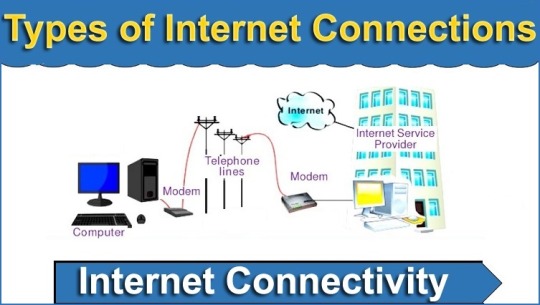
Hello Friends! Today, we will explain about the different types of internet connections available, from cable to DSL and fiber optic. Then you can get the best Internet connection for your needs with our comprehensive guide.
Article Hot Headlines:
In this section, we will show you all headlines about this entire article; you can check them as your choice; below shown all:
What is Internet Connection?
Types of Internet Connection
Dial-Up Internet Connection
Broadband Internet Connection
DSL Internet Connection
ADSL Internet Connection
SDSL Internet Connection
Cable Internet Connection
Fiber Optic Internet Connection
Satellite Internet Connection
Fixed Wireless Internet Connection
ISDN Internet Connection
Cellular Internet Connection
Mobile Broadband (3G/4G/5G)
WiMAX Internet Connection
T1/T3 (T-carrier lines)
DIA Internet Connection
Wi-Fi Hotspots
Power-line Internet
Leased Line Internet Connection
Top Internet Service Providers in India
FAQs (Frequently Asked Questions)
What are the different types of internet connections?
Which type of internet connection is the fastest?
Which type of internet connection is the most common?
Let’s Get Started!!
0 notes
Text
Bridging the Digital Divide: Enhancing Cross-Border Communication in Remote Work
The way we work has been revolutionized by the digital era, allowing individuals and teams to seamlessly collaborate and communicate regardless of geographical boundaries. Remote work communication has gained tremendous popularity, providing flexibility and opening up opportunities for businesses to leverage a diverse global talent pool. However, a significant obstacle in this digital landscape is the existence of the "digital divide," which denotes the inequalities in access to digital infrastructure and internet connectivity among various regions and countries. This divide poses challenges to effective communication in remote work environments, particularly when teams span different borders and time zones. In this article, we will delve into strategies aimed at bridging the digital divide, enabling improved remote work experiences that foster collaboration and boost productivity across borders.

#DigitalDivide#RemoteWorkCommunication#GlobalCollaboration#BridgingBorders#DigitalInfrastructure#InternetConnectivity#ProductivityBoost#CollaborationAcrossBorders
0 notes
Text
Huawei's HarmonyOS Mobile System: A Glimpse of Hope

Ever since the launch of the first HarmonyOS mobile phone, Huawei fans have been eagerly waiting for the system to be available outside of China. Although the company seems to be taking things slowly, there is a glimpse of hope that the HarmonyOS system will soon leave China. The launch of the Huawei nova 11 series was followed by the quiet launch of the Huawei nova 11i in South Africa. While there were not too many surprises in terms of specs, the software end is worth noting as the Huawei nova 11i runs on the EMUI 13 system, which is based on HarmonyOS.
Huawei Nova 11i: Impressive Features
The Huawei nova 11i is one of the few mobile phones with a HarmonyOS system available outside of China. This phone boasts impressive features, such as a 6.8-inch HUAWEI FullView Display, 128 GB storage, and 48 MP high-resolution photography capabilities. Designed to impress, the phone's sleek and stylish design and large battery capacity are notable features. The battery is non-removable, and to replace or repair it, one must visit an authorized Huawei Service Center.
Huawei Nova 11i Design: A Perfect Viewing Experience
The Huawei nova 11i's 6.8-inch HUAWEI FullView Display provides an immersive viewing experience, making it perfect for streaming videos or playing games. The 128 GB storage ensures that users have plenty of space to store their favorite apps, photos, and videos. The 48 MP high-resolution camera is perfect for capturing stunning photos and videos, and the phone's various camera modes make it easy to take professional-quality shots.
Huawei Nova 11i Battery: Long-Lasting and Super-Fast Charging
The Huawei nova 11i's 5000 mAh large battery provides users with long-lasting battery life, making it perfect for those who are always on the go. The phone also supports 10V/4A super-fast charging, which means that users can quickly charge their phone and get back to using it in no time. The HUAWEI SuperCharge cable and charger are required for this feature, but they are included in the package.
Huawei Nova 11i Connectivity and Multimedia Support
The phone supports 10V/4A super-fast charging and is compatible with 10V/2.25A or 9V/2A and 5V/2A. The phone also supports various audio and video formats, making it easy for users to enjoy their favorite music and videos on the go. Additionally, the phone supports 4G LTE FDD and TDD bands, providing fast and reliable internet connectivity.
Huawei Nova 11i Package: What's Included
The Huawei nova 11i package includes a phone (built-in battery), charger, USB Type-C cable, flexible clear case, and quick start guide.
The Huawei nova 11i is an impressive mobile phone with a HarmonyOS system available outside of China. It boasts a sleek and stylish design, a large battery capacity with super-fast charging, impressive camera features, and multimedia support. While Huawei is taking things slowly with the launch of the HarmonyOS system outside of China, the availability of the Huawei nova 11i in South Africa is a glimpse of hope for Huawei fans worldwide.
Read the full article
#audioandvideoformats#battery#design#EMUI#HarmonyOS#Huawei#Huaweinova11i#internetconnectivity#mobilephone#SIMmodel#Software#specs#super-fastcharging
0 notes
Text
Need for a Well-Managed Network to Ensure Customer Satisfaction

Connectivity is the engine that drives global business, and the quality of that connectivity and the infrastructure upon which it is constructed can profoundly affect all facets of business, from productivity to security. Connectivity is more than just a function for businesses today. It's an adventure. In the past, connectivity was merely a method for transferring data from A to B, enabling users to communicate and collaborate. More is needed for managed service providers to provide the means to connectivity. From quotation and onboarding through deployment, delivery, and ongoing support, business customers seek a flawless experience.
Companies with offices around the globe or a group of digital natives embracing remote work need to know that their connectivity solution will be robust, adaptable, and able to scale with their growth plans. The bar for customer fulfillment in the network solutions industry has never been higher. Managed service providers, particularly those in IT and networking, have been on a voyage. Businesses have been in a near-constant state of flux due to the rapid evolution of technology, always seeking to improve and expand their networking capabilities.
With the rapid shift to hybrid and remote working, businesses were compelled to reevaluate their current infrastructure and service providers, which shifted the focus back to connectivity. It is the service providers who must now adapt to satisfy the rapidly changing expectations of their customers. They frequently employed service license agreements (SLAs) that were not customer-friendly and were readily breachable on both sides, resulting in tense relationships between customer and service provider, which both parties stood to lose—by the turn of the millennium, connectivity and managed services had evolved.
0 notes
Text
High-Speed Internet Services in Australia: Challenges, Progress, and Future Prospects

Australia's experience developing high-speed internet services has been revolutionary, profoundly affecting many facets of everyday life, the economy, and society. Even with significant advancements, there are still issues with high-speed internet deployment and accessibility in Australia, particularly in rural and isolated locations.
The extensive terrain of Australia presents a significant obstacle to the rollout of high-speed internet services. With a very low population density, Australia is one of the biggest nations in the world. Providing continuous and dependable high-speed internet connections across the country is more logistically difficult, especially in isolated and rural areas where infrastructure development is expensive and technically difficult.
The digital divide is another problem. The speed and availability of the internet vary significantly between rural and urban locations, even with efforts to close the gap. Several rural and isolated areas still have sluggish speeds and erratic connections, even though big cities have access to fast and dependable internet. Already existing disparities are made worse by the digital divide, which has wider effects on business, education, and access to basic services.
Another problem is the price of internet services in Australia. Low-income households may be difficult to afford high-speed internet services in Australia since they frequently pay more for them than in other industrialized nations. These services' accessibility and affordability are also impacted by the competition and pricing policies in the telecommunications industry.
Australia has made great progress in growing and enhancing high-speed internet services in spite of these obstacles. An essential component of this advancement has been the National Broadband Network (NBN). Regardless of location, the NBN was launched in 2009 to give all Australians access to high-speed internet. Despite the project's setbacks and criticism, millions of households and companies have been successfully connected to faster and more dependable internet services.
Another development in this regard is the use of 5G technology. Compared to earlier mobile network generations, 5G has higher capacity, reduced latency, and quicker speeds, opening up new applications and services. Australia's main telecom companies have started deploying 5G networks, which are anticipated to supplement the NBN and offer high-speed internet access in places with limited fixed-line connections.
Through several public and private sector efforts, the digital divide has also been addressed more effectively. Programs to increase digital literacy, provide low-income households with internet access subsidies, and build out rural infrastructure have all helped to close the disparity.
Given the several significant advancements anticipated, Australia's high-speed internet services have a bright future. Fiber-to-the-premises (FTTP) technology advancements along with the NBN's ongoing development will probably boost internet dependability and speeds across the nation. In rural and isolated places, where access to high-speed internet has historically been restricted, this will be especially helpful.
Although there are still issues, Australia's high-speed internet services have advanced significantly. The country's large geographic area, digital divide, and high service costs are still major obstacles. However, advancements made possible by programs like the NBN and the introduction of 5G technology promise a more interconnected future. Australia can guarantee that all of its residents make use of the advantages that high-speed internet brings by tackling these issues and expanding on the advancements already accomplished.
Visit our website at https://nextelle.net.au/.
0 notes
Text
Adobe Illustrator AI Create Stunning Vector Graphics
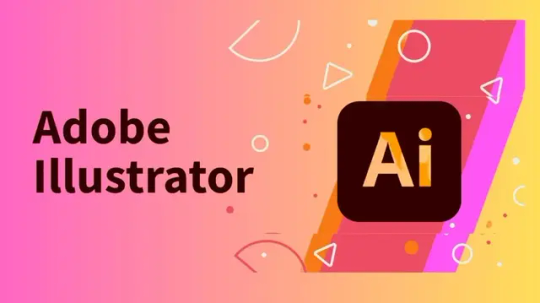
Adobe Illustrator AI
The current state of technology has radically changed due to artificial intelligence, and Adobe didn’t want to fall behind. New AI-based capabilities have recently been added to Adobe Illustrator AI, one of the company’s most well-known creative applications along with Photoshop, and we can already tell you that they’re really interesting.
Who among the creatives hasn’t occasionally desired that Adobe Illustrator AI could “read” their minds and produce artwork on the spot? That will stay science fiction for the time being, but Adobe has accomplished something similar: Illustrator can convert textual descriptions into vectors.
What creative hasn’t fantasised about Adobe Illustrator AI having the ability to “read” their minds and produce vector graphics on-the-spot? That may still be science fiction, but Adobe has accomplished something fairly similar: Illustrator can translate text into vectors. The finest aspect? Feel free to give it a shot.
Next, we’ll walk you through using this capability and a lot more to make the most of Adobe Illustrator AI features.
Adobe Illustrator makes the transition from text to vector graphics simple
Adobe has included one of the most intriguing and practical features in Illustrator the ability to “translate” a text description into a vector graphic thanks to artificial intelligence.
We can create vector graphics from scratch with Adobe Firefly by utilising just our words. Tell the programme what you would like to appear and the type of motif or scenario you would like it to create. Illustrator will provide multiple possibilities based on your directions; you can select the option that most closely matches your needs. The final images will show up as editable groups that you can change whenever you’d like.
You’ll also see that it’s a rather straight forward procedure. All you have to do is take the following actions to quickly create your own graphics:
Choose among the Star, Polygon, Ellipse, or Rectangle tool. You’ll see that Properties has a new sub menu on the right labelled Text to Vector Graphic (Beta). If there isn’t a menu visible, select Window from the Adobe Illustrator AI top bar. Next, select Text to Vector Graphic (Beta) once more.
Subject, Scene, Icon, and Pattern are the four categories of options available in Text to Vector Graphic. As you can see below, each of them creates a distinct type of graphic:
Subject: Produces an intricate vector painting devoid of a backdrop.
Scene: Builds an entire vector scene.
Icon: Like Subject, Icon generates a precise vector drawing without a background, making it perfect for grouping logos.
Typical: Fills a shape with the previously mentioned pattern.
After selecting all the options you want to use, click the Prompt box and fill in the details about the kind of graphic you need to create. It’s critical that you speak in an understandable and straight forward manner. The idea is to use simple language.
Additionally, Illustrator provides a really intriguing function named Reference Asset. It is located under Styles, under Properties. With the aid of this tool, the created object will more closely resemble the project you are working on. You’ll notice that Styles offers two options:
Art: Guarantees that the created object’s style corresponds with the surrounding vector or flat image of the chosen illustration.
Picker: Lets you select any object’s style in the illustration.
Additionally, you can change the generation’s intensity (between Minimal and Complex) in Settings, a section that is also included under Properties.
Use AI to create a pattern from scratch
Artificial intelligence makes designing patterns in Adobe Illustrator AI easier than ever.
First, use the Direct Selection tool in your project to decide where to apply your pattern.
Navigate to the Pattern option in Text to Vector Graphic.
As previously, you must describe the kind of design you would like to create, along with its style and appearance, in the Prompt. To achieve the best outcomes, always remember to utilise short, direct language.
You can further customise your designs by choosing colours or using presets when producing patterns, among other choices.
Making substitute colours in Illustrator
Additionally, we can quickly alter the tones of an illustration with the use of Adobe Firefly technology. Simply list the colours you want for your project, and Adobe Illustrator AI will take care of the rest. There’s no muss, no hassle. In this manner, you can quickly experiment with many modifications and see how they would seem. Put it into practice by giving it a try and doing the following:
Choose the object or illustration you wish to change before adjusting the colours. The Selection tool is able to help with this.
Click the Edit button in the top bar. Next, choose Generative Recolor and Edit Colours.
You will need to choose which colour scheme or colours you want to use in place of the ones that are already used in the Prompt box. You can try out a few of the options found in the Samples section of the same panel.
As an alternative, you can select a colour combination right away in the Colour section, which is located directly behind the Prompt box. Illustrator will produce a number of samples according on what you select.
Adobe Illustrator AI features
To use Adobe Illustrator AI, Photoshop, and other suite products, you must have a monthly or annual membership. With Adobe, you may select from a number of options to find the plan that best meets your requirements.
Keep in mind that Adobe provides a complimentary seven-day trial, which is limited to one use, so make the most of it.
Adobe Illustrator AI comes with the capability to create a vector design from a description and the flexibility to replace colours, unless the user resides in China. Additionally necessary is a steady Internet connection, particularly if you wish to profit from artificial intelligence.
Read more on Govindhtech.com
#AdobeIllustratorAI#artificialintelligence#Internetconnection#vectorgraphic#news#technews#technology#technologynews#technologytrends
0 notes
Text
Why Is Internet So Slow? Reasons & Quick Tips to Fix (2024)

🤔Struggling with a sluggish internet connection?🐢Don't let slow speeds ruin your day!🌠
💻💪Check out these 10 effective tips to get your internet back on track!🚀Boost your browsing, streaming, and downloading with these simple tricks💥
🔧Optimize your network and say goodbye to frustrating lags🎉Enjoy lightning-fast internet and make the most of your online experience!🌐
📖To read more visit here🌐🔗: https://perfectio.net/why-is-internet-so-slow/
#internetspeed#networkoptimization#techtips#internet#speed#slowinternet#internettroubleshooting#techsupport#computertips#internetconnection#onlineissues#fixit#techhelp#internetproblems#slowinternetfix#internetoptimization#computersolutions#onlinefixes
0 notes
Text
3 Easy Methods to Connect ChatGPT to Internet
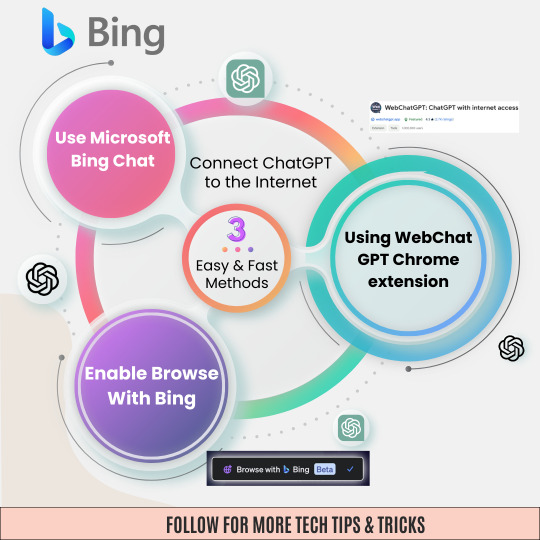
✅🏁Ready to level up your ChatGPT experience?🌟
⛓🌐Connect ChatGPT to the internet with these 3 simple methods!3⃣
🚀From integrating with APIs to setting up webhooks, I've got you covered.😎💡
🔓Unlock a whole new world of possibilities and enhance your AI interactions effortlessly. 🤖💬
📢Let's bridge the gap between ChatGPT and the online realm together!🤲🤝
#chatgpt#ai#internetconnection#techtips#artificialintelligence#technology#howto#tutorial#internet#chatgpttips#chatgpttricks#languagemodel#chatbot#onlinetools#didyouknow#techlife#futureoftech#getconnected#tipsandtricks#chatgpthelp#onlinechatgpt#bing#chromeextension#webchatgpt
0 notes

